A Glimpse Into Your Post-Roe Future
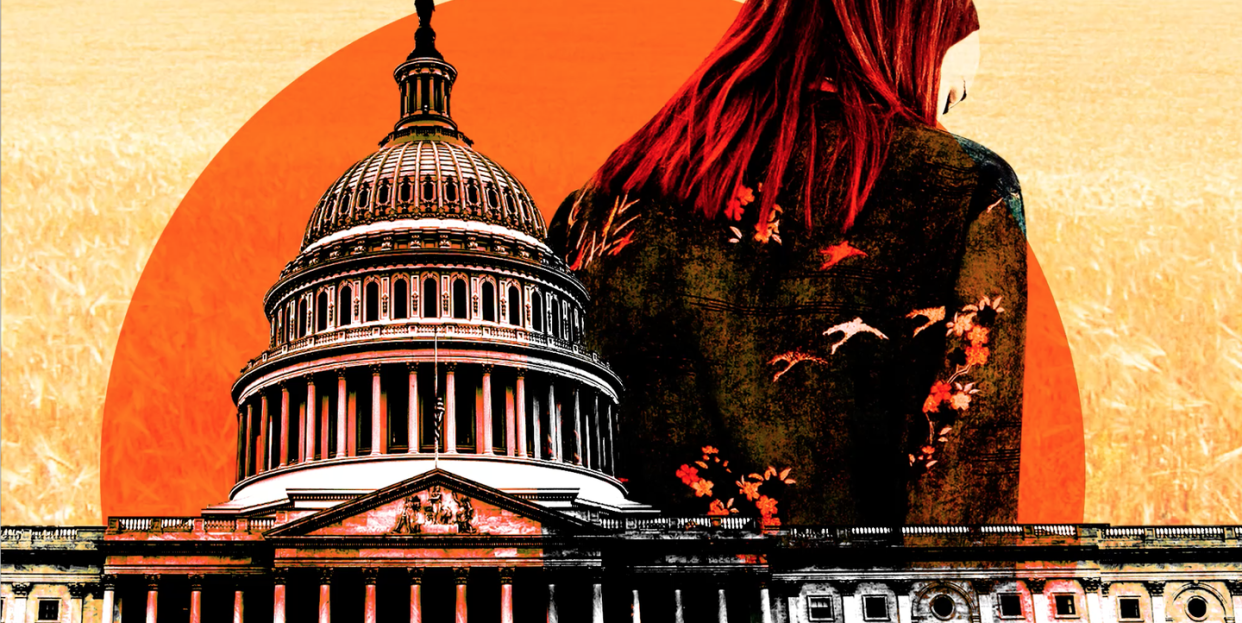
- Oops!Something went wrong.Please try again later.
- Oops!Something went wrong.Please try again later.
Imagine a woman who’s just found out she’s pregnant. She wants to not be pregnant, but no one answers the phone at her state’s only abortion clinic. It rings and rings and rings. She discovers the clinic’s closed. As she tries to figure out what to do, she grows desperate. She just wants to know her options.
If she’s pregnant, she’s pregnant. That is the option. Or at least the only legal one.
Even if her health is in serious jeopardy or she’s at risk of death. Even if her fetus isn’t viable. Even if she can’t afford a child, she’s a victim of domestic violence, or she just doesn’t want to be pregnant, she's doing this. She will be pushed into giving birth because that's the law.
This could be the world with Brett Kavanaugh on the Supreme Court.
In September 2016, Donald Trump released a letter addressed to pro-life leaders, in which he made clear his positions for reproductive rights. If he were to become president, he promised, he would nominate pro-life justices to the Supreme Court, end “late-term abortions,” defund Planned Parenthood, and make permanent the Hyde Amendment, a federal provision that creates a barrier for lower-income women seeking an abortion.
It read like a piece of anti-abortion fan fiction. But now it may come true.
Two months ago, Justice Anthony Kennedy announced his retirement from the Supreme Court after 30 years, and Trump nominated Judge Brett Kavanaugh as his replacement. Kavanaugh, plucked from a list of judges shaped by conservative groups, is the D.C. Circuit Court judge who just last year wrote a dissenting opinion arguing that an undocumented 17-year-old detained by ICE should be denied immediate access to an abortion. She was about 15 weeks pregnant at the time.
While Kavanaugh has said that Roe v. Wade—the Supreme Court case that recognized a women’s right to an abortion—is “settled law,” critics say that’s meaningless rhetoric because settled law can be overturned. They point not only to his own judicial record, which seems to favor religious liberty over women’s individual rights, but also to Chief Justice John Roberts who said the same thing about Roe at his own confirmation hearing, yet has consistently voted against abortion rights ever since. They also note that Kavanaugh has called the late Chief Justice William H. Rehnquist his “first judicial hero” and praised Rehnquist’s dissent in Roe.
Women aren’t exactly living in an abortion-access utopia, but with Kavanaugh on the bench and a majority conservative Supreme Court, it's not a stretch to imagine that things would go from not so great to grim. And Roe doesn’t even need to be overturned for that to happen.
ABORTION WILL BE COMPLETELY INACCESSIBLE IN SOME STATES
Today, you can legally get an abortion in all 50 states. But if Kavanaugh votes to overturn Roe, women would lose their constitutional right to one and it would be left to each state to decide on the legality of abortion within its borders.
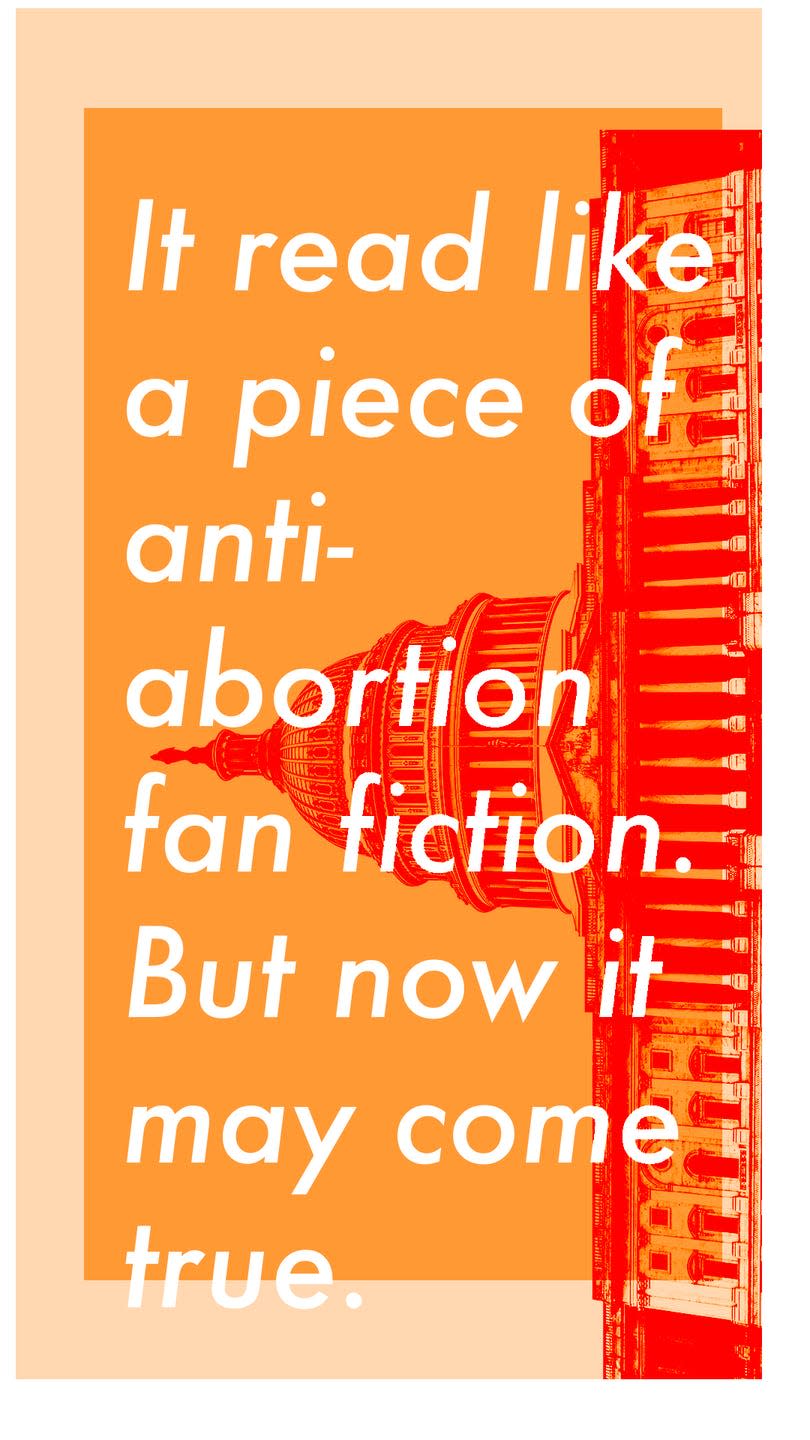
The Center for Reproductive Rights identifies 22 states where the right to abortion is at high-risk should Roe go. Alabama and West Virginia are preparing anti-abortion ballot initiatives for this November, and in the case of four states that have what’s known as “trigger laws”—Louisiana, Mississippi, North Dakota, and South Dakota—abortion would immediately be illegal. If you had an abortion scheduled for the next day, too bad. Canceled.
But states wouldn’t have to make abortion illegal to make it basically impossible for women to get one. Republican lawmakers at the state level have already proven surgical in their slicing of women’s reproductive rights, passing more than 400 restrictions on abortion since 2011, with 63 passed in 2017 alone.
Some of these restrictions are clear violations of Roe—for instance, state “heartbeat” bills, which ban abortion once a fetal heartbeat is detected, are pretty much guaranteed to be declared unconstitutional because, according to Roe, states can’t ban abortion before a fetus is able to live outside the womb. But that didn’t stop Iowa’s governor from signing one of these bills into law in May. It was put on hold until a lawsuit challenging its constitutionality is resolved, but if Roe were overturned, its constitutionality would no longer be an issue. A state could implement a ban like this, one that would outlaw abortion before many women even know they are pregnant.
WOMEN IN RED STATES WILL GET HIT THE WORST
Abortion access is already largely dependent on where you live. Six states in the U.S. have just one abortion clinic, and a recent study by Advancing New Standards in Reproductive Health (ANSIRH) found that 27 cities currently qualify as “abortion deserts,” or places where pregnant women have to travel more than 100 miles one-way to reach an abortion facility. As of 2014, 90 percent of counties in America had no abortion clinic, according to the Guttmacher Institute, an organization dedicated to advancing reproductive health and rights.
It’s only going to get worse if, in the words of Vice President Mike Pence, Roe is “consigned to the ash heap of history.” If you live in a state that protects your right to make decisions about your body, you will likely be able to terminate a pregnancy. If not, you will be able to have an abortion only if you take time off work, travel hundreds of miles across state lines, pay for transportation, lodging, and possibly childcare (most women who have abortions are already mothers), on top of the price of the procedure. Not really an option for a lot of women.
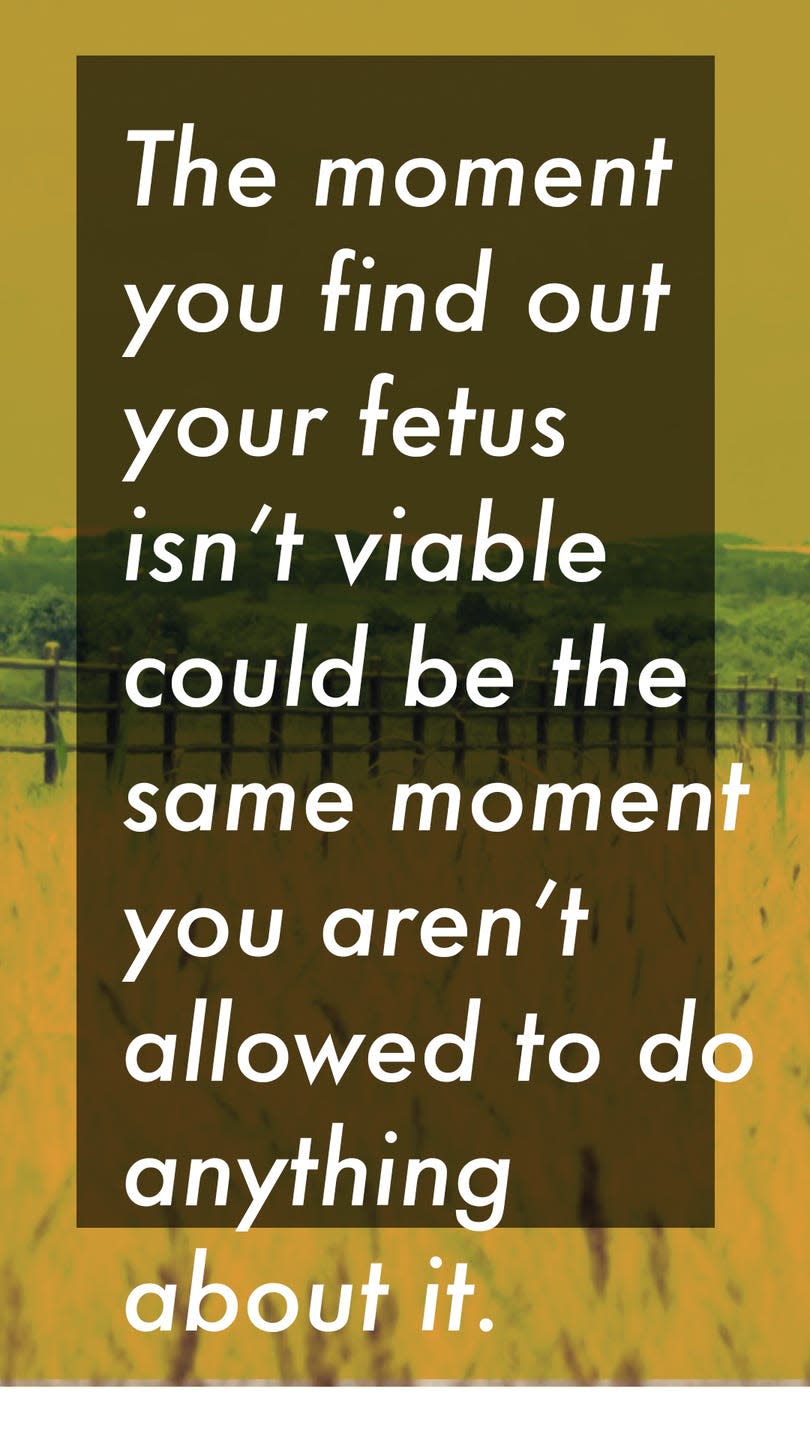
Given the state-level attacks on reproductive rights in recent years, this is already a barrier many women face. With states banning abortion after a certain point in the pregnancy, for instance, women who find out about their pregnancy too late to terminate in their state, or take too long to gather the funds needed for the procedure, or want the pregnancy but are told too far along in the pregnancy that the fetus isn’t viable must go elsewhere if they’re still seeking an abortion.
Even some progressive states currently have gestational age limitations in place, but there have been calls to change them in anticipation of a Kavanaugh confirmation. And while blue states may work to expand abortion rights and repeal antiquated laws, red ones are likely to go in the opposite direction.
Imagine how much harder it will be to make this journey if you live in a region that’s hostile to abortion rights and all the states around you take the end of Roe as an opportunity to restrict abortion further—to eliminate it entirely or make it far less accessible. Imagine how much farther you’ll have to travel. Imagine how overcrowded the clinics in more progressive states will be. Imagine the wait lists.
Abortion only gets more expensive—and more risky—as you get later in the pregnancy.
BUT WOMEN IN BLUE STATES AREN’T SAFE, EITHER
When the possibility of Roe being overturned is discussed and you hear about the legality of abortion “going back to the states,” it might sound like all decisions will be made at the state level. But that’s not how it works. Congress still has the authority to pass legislation that would affect women in every state in the country.
Earlier this year, the Senate attempted to pass legislation that would ban abortions after 20 weeks, despite the American College of Obstetricians and Gynecologists (ACOG) releasing an official statement opposing it. Given that many fetal tests are conducted around 20 weeks, a law like that would mean the moment you find out your fetus isn’t viable could be the same moment you aren’t allowed to do anything about it.
The measure failed, with Republican Senators Susan Collins and Lisa Murkowski voting against it. And if the Democrats take the House in 2018, you’re not going to see a bill like this in the next two years, but that doesn’t mean it’s gone for good.
“It is probably going to be short of 60 [votes],” Senator Lindsay Graham, who sponsored the legislation, said before the last vote, “but to those who believe in this issue, we will be back for another day.” A restriction like this would certainly be challenged, but it would be far less likely to be struck down by the Supreme Court with a conservative majority that includes Kavanaugh.
And it could get even more extreme. Remember those six-week bans that states have tried to pass? Less than a year ago, the House held a hearing on a federal six-week ban. Everyone knew it would never become law—it was reportedly floated to make a 20-week ban seem more moderate—but it’s just one of the restrictions that could be proposed and deemed acceptable in a post-Roe era. And it would apply to every woman in the country, no matter where she lived.
For a woman who doesn’t get her period regularly and doesn’t realize until week seven that she’s pregnant, tough luck. Not only that—the bill, as written, didn’t include an exception for rape or incest, so a woman who was sexually assaulted and dealing with the trauma in the aftermath of the attack would have to make a decision immediately, if she even knew she was pregnant, or it would also be too late.
Would the government really do that? Would the Court really uphold it? After more than 40 years since Roe, it’s hard to imagine women having so little say over their bodies. But in the case last year involving the undocumented minor, Kavanaugh wrote that “Government has permissible interests in favoring fetal life, protecting the best interests of a minor, and refraining from facilitating abortion.”
How far he would go to protect “fetal life” is an open question.
ABORTION WON’T GO AWAY—BUT IT WILL BECOME DIY
While woman might lose legal ground to make decisions about their bodies, it’s unlikely they’ll cede control. “Historically, what we know is that women take matters into their own hands,” says Carole Joffe, Ph.D., a member of the ANSIRH research team and an expert on women’s lives before and after Roe.
If Roe is overturned, Joffe anticipates that there will be an explosion of “self-managed” or “self-induced” abortions. The most recognizable symbol for the pre-Roe abortion is the coat hanger, but these days it’s more likely that a woman would turn to pills (often misoprostol), ordered on the internet, to terminate her pregnancy at home.
While research has proven that it's a safe method in the first trimester, it’s not legal outside the medical establishment. So while there may be fewer deaths than pre-Roe, there may be more prosecution of women, Joffe says. Women could become criminals for making medical decisions about their bodies.
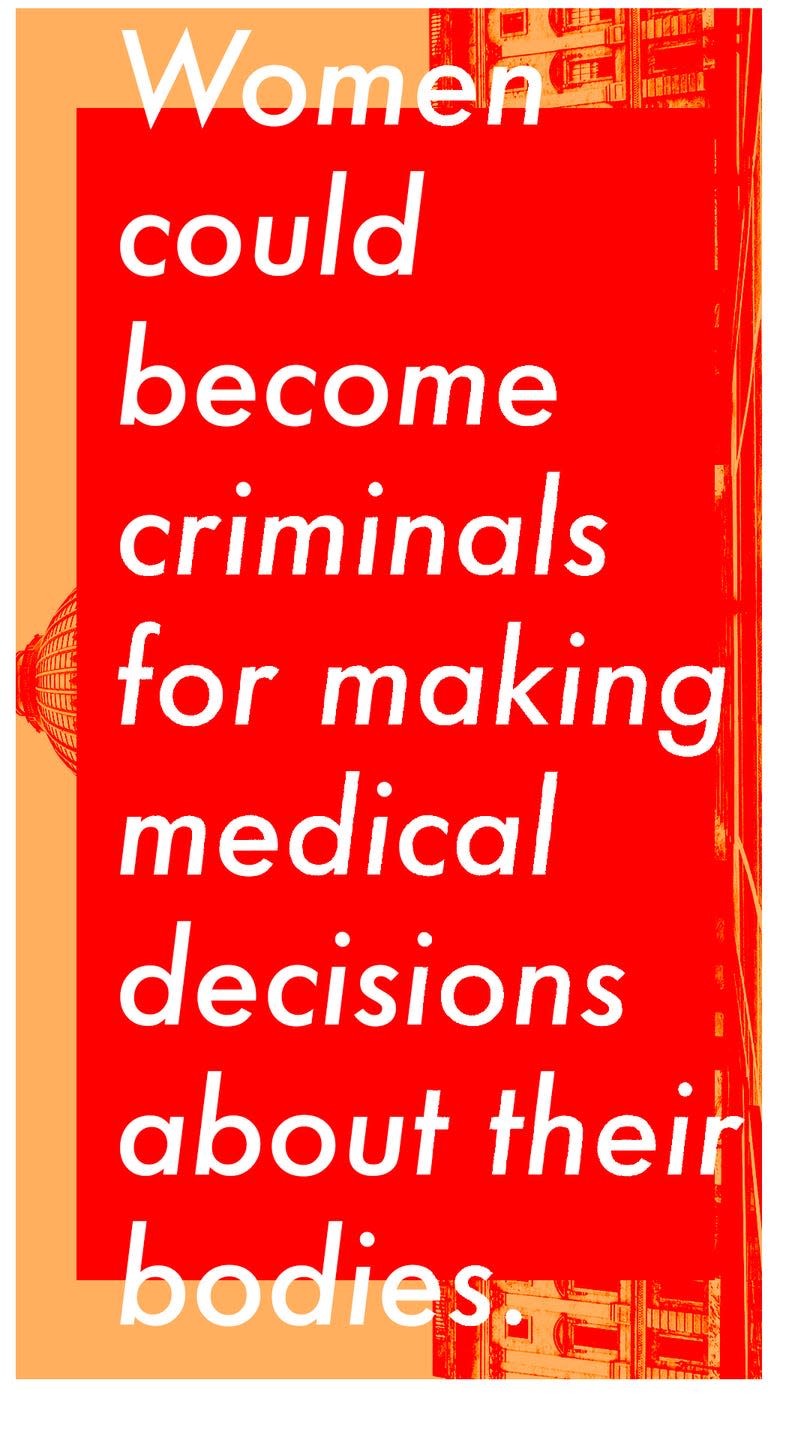
“In the pre-Roe era, there was relatively little prosecution,” she says. “Some women were called to testify against doctors, but they themselves weren’t jailed. There wasn’t an anti-abortion movement then in the same degree as it exists today. Today, we have Jeff Sessions as attorney general and a well-organized anti-abortion movement that exists in every state and we can be sure that in the future there will be prosecution.”
Trump himself said during the campaign that there should be “some form of punishment” for women who terminate pregnancies if abortion is illegal. (He walked back his remarks after backlash and said only doctors should be face legal repercussions.)
Of course not every woman will have the resources to access a medication abortion or will be early enough in her pregnancy for it to be an effective method. A woman who desperately does not want to be pregnant will likely turn to more dangerous black-market methods or Internet-spun remedies.
“We have so many dire statistics about what’s happening to women in this country, including the fact that they’re dying, but the people making the rules that put women in these situations don’t seem to care about that,” says Andrea Flynn, a researcher who studies reproductive health at the Roosevelt Institute, a liberal think tank.
ROE DOESN’T EVEN HAVE TO GO FOR THINGS TO GET BAD
Even though two-thirds of Americans don’t believe Roe should be overturned, according to a Kaiser Family Foundation poll, it doesn’t need to be for things to get darkly dystopian.
Many of the restrictions on reproductive health care passed by GOP-controlled legislatures in recent years have made abortion technically legal but practically inaccessible. Such regulations have often been challenged in district, then circuit courts, meaning their fate—and those of the women they affect—rests in the hands of the judges who hear them. Trump has already successfully packed these courts with conservative judges who may be more inclined to uphold regulations even with Roe in place. But for the cases that are appealed all the way to the Supreme Court, who’s on the bench matters.
Take, for instance, Whole Woman's Health v. Hellerstedt, which the Supreme Court took up during its 2015-2016 session. In that case, Texas, a state with more than 5 million women of reproductive age, had imposed such strict regulations that more than 20 clinics had closed in just a few years and the number was likely to drop to around 10. An appeals court upheld the restrictions, but the Supreme Court reversed that decision in a 5-3 ruling, with Justice Kennedy taking the side of the clinics. (Justice Scalia had died earlier that year so only eight justices participated in this decision.)
Now imagine how that case might have gone with a conservative justice like Kavanaugh on the bench, in addition to conservative Neil Gorsuch, who was also nominated by Trump and confirmed last year. Imagine how they might rule on future laws that seek to restrict at a woman’s right to choose so severely that it’s functionally nonexistent.
EXPECT MORE TRAUMATIZED, POVERTY-STRICKEN WOMEN
For those women who continue their pregnancies against their will, the repercussions are many—and awful.
Women who are unable to obtain an abortion, or denied one due to their state’s legal requirements, are likely to experience symptoms of post-traumatic stress, according to Antonia Biggs, Ph.D., a social psychologist with ANSIRH who has researched the mental health impact of being forced into pregnancy. And the stress is often compounded, as many of these women walk away from the clinic—still pregnant—and back to a dangerous situation. In her research, Diana Greene Foster, Ph.D., the director of research for ANSIRH, found that up to 22 percent of women seeking an abortion self-report having recently experienced violence at the hands of a partner. An inability to terminate an unwanted pregnancy may even result in more women suffering from domestic violence.
Having an abortion is actually associated with a reduction over time in physical violence experienced by a woman from the man involved in her pregnancy—carrying the pregnancy to term is not. “Pregnancy is an incredibly scary thing—especially if you cannot trust the person you’re with,” Foster says.
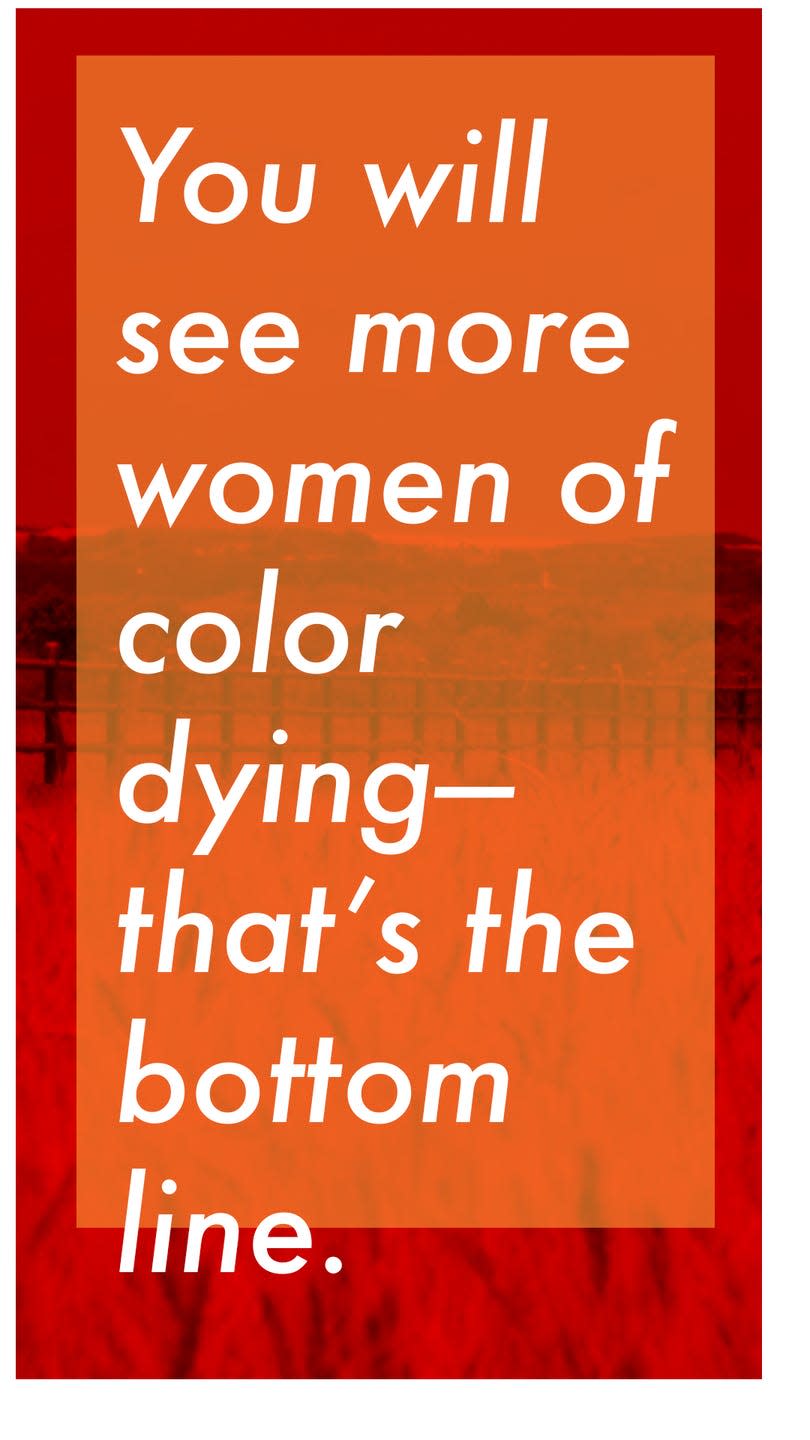
There are financial costs, too. “Not having enough money to care for a child or another child is the most common reason for seeking an abortion,” Foster says. It can cost hundreds of thousands of dollars for a middle-income family to raise a child. And yet what if the government puts up so many barriers to obtaining an abortion that it becomes prohibitively expensive? In other words, what if you’re forced to have a child you can’t afford because you can’t afford not to have one?
Foster worked on the 2014 Turnaway Study, which looked at how being denied abortion care impacted women’s lives. It found that not being able to obtain a wanted abortion resulted in economic insecurity for women and their families and “lowered their aspirations for the future, like getting a better job or finishing school.”
Unsurprisingly, women of color will suffer the greatest consequences if abortion access is outlawed. Black women are already 243 percent more likely to die from pregnancy-related causes than white women, even controlling for factors like education, income level, physical health, and access to prenatal care, and they are 35 percent more likely to experience intimate partner violence than white women. Take away their choice about whether to go through with a pregnancy and the outcome will inevitably be devastating. You will see more women of color dying—that’s the bottom line, says Monica Simpson, executive director of SisterSong, a reproductive justice coalition for women of color and other marginalized communities in the South.
This week, as Kavanaugh answers questions from the Senate Judiciary Committee, the nation will listen carefully trying to parse his views on reproductive rights and discern how he might rule if seated on the Court. But mostly likely, his words won’t actually tell us anything.
Look at his history though. Look at the people who want him on the bench. Look at the views they've expressed on abortion.
Imagine a country in which women are trapped, in which the government has more control over their bodies than they do. Imagine them being told that a right they've had for more than four decades should never have been given to them in the first place.
You might not have to imagine for long.
You Might Also Like

